Well bottom filter - when to do, how to make it and from what?
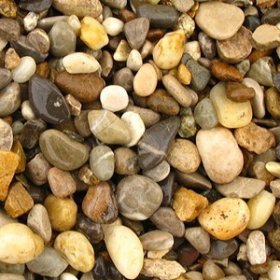
When organizing the water supply of the site, the owners often consider several options. As a result, many opt for wells, hoping to get clean, fresh, tasty water, regardless of the quirks of utilities and other organizations. There is a reason for this, but it must be borne in mind that the construction of a well is a responsible matter. Before the master there are many questions. For example, do I need to install a filter for a well? What material to choose for him? After all, the quality of water, and therefore health, depends on it.
To be or not to be a bottom filter?
Experienced craftsmen claim that a filter device or even a simple gravel sketch is not necessary in all wells. In most cases, they will either prove useless or even cause harm.
It is not in favor of the filter that well cleaning in the future will most likely have to be paid at a double rate. Often the best decision is to leave the bottom in its natural state. How not to miscalculate?
To answer the question whether a bottom filter is needed for a well in your particular case, you can pay attention to some factors, in particular, to the bottom:
- If the well is dug in clay soil, and its bottom is dense clay, from which fontanelles are beaten, then the filter does not need to be installed. In this case, it can only do much harm by “clogging” the water vein. Water in such wells and without filtration will be clean and fresh.
- In a well with a bed of loose clay, the water very quickly becomes cloudy, because the springs erode the soft layer. Large river pebbles or the so-called gravel sketch 10-15 cm thick, which will delay the clay particles, will help to solve the problem. It is only important to control that the source of water does not overlap.
- If the well is dug in sandy soil, attention is paid not only to the bottom, but also to the "walls". Sand, washed away by water, can turn clean, good water into unfit for drinking. In such conditions, it is impossible to draw water using a pump: the equipment will fail almost immediately. It is in such cases that a water filter from a well is not just desirable, it is simply necessary.
Methods for laying such a filter
There are two ways to install the bottom filter: forward and reverse. They differ in the sequence of arrangement of the layers.
- With direct laying, the largest stones are located below, then the middle ones, and small pebbles appear at the top. This method is also used when using a shield that protects against quicksand.
- When re-laying, the largest stones appear at the top, and the smallest ones at the bottom. Sometimes the bottom is covered with a layer of coarse quartz sand.
The thickness of the layers (with any method) is 10-15 cm, and the fraction of the "filler" in each differs by about 5-6 times.
Filter materials and their preparation
The materials used to create the bottom filter must meet stringent toxic safety requirements, not decompose or dissolve in water.
Those who don’t peck at money can afford filters containing silver, for example. But inexpensive natural materials are more accessible: crushed stone, pebbles, gravel, river and quartz sand, shungite, jadeite. A good option would be special bath stones, which can be used to create the coarse-grained layer.
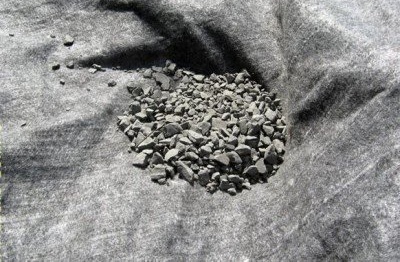
Shungite well purifies water from oil products, heavy metals and various organic compounds, mineralizes
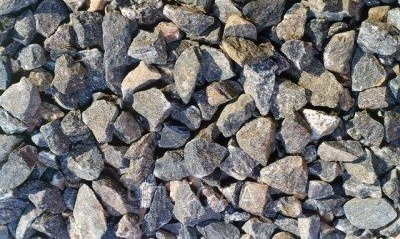
Crushed stone is not the best material for the bottom filter. Granite crushed stone is absolutely not suitable

Water filtered with jadeite does not contain microorganisms that can cause allergic reactions, it has a beneficial effect not only on humans, but also on plants
Before laying on the bottom of the well, all materials must be checked for organic impurities and rinsed. Sand is poured into a container, poured with water and thoroughly mixed, the water is drained.
And so several times until the liquid remains practically clean.
When creating a bottom filter in combination with natural ones, you can use modern artificial materials, for example - geotextiles.
Do not use materials that have previously been used in any other systems (cleaning, for example). Since the porous structure of many of them allows the accumulation of harmful substances.
With a shield or on a shield?
If at the bottom of the well quicksand or water flows too quickly, then, before laying the filter, install a shield with holes. As the material for its manufacture choose wood or metal mesh.
Wooden shield
It is quite possible to make a wooden shield yourself: you need to buy boards and knock them close to each other.
Next, draw a circle along the diameter of the well (a little less). Closer to the center, several holes are drilled, about 5 mm. The shield is cut off, sometimes wrapped with geotextile, and set to the bottom. To prevent its ascent, large stones are laid on top, then they are covered with the selected material.
Important! Decaying over time, almost any wood gives the water a sweet, putrid taste, and an unpleasant odor gradually appears. Such a shield needs to be changed after 3-5 years.
Experienced masters recommend using a juniper shield when it is required to reanimate a well, this is necessary if they have not been used for a long time. First, they perform cleaning, then they are treated with a special disinfecting solution and a bottom shield is installed, which has antibacterial properties.
Mesh Shield
To reduce the amount of sand entering the mine, you can make a shield of fine-mesh galvanized or stainless steel mesh (mesh size no more than 2x2 mm).
It will take two metal hoops, which can be made of sheet iron and thick wire, between which they fix the grid.
The structure is mounted on a bed of stones, the thickness of which depends on the intensity of water intake and varies from 10 to 30 cm. It is fixed with the help of locking pins mounted in the wall of the well.
The bottom filter does not require special care, but when cleaning the well, you need to pay attention to it: remove, rinse or replace.
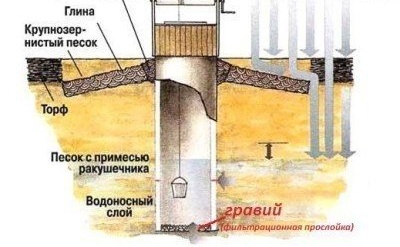
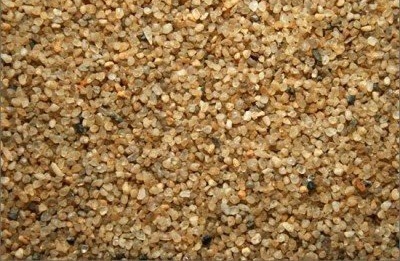
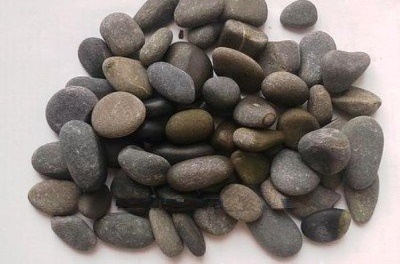
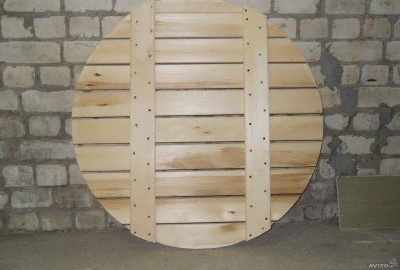
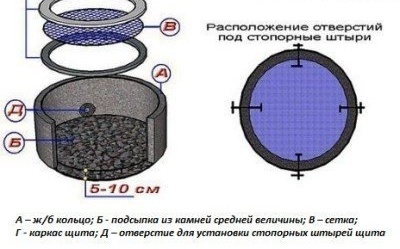
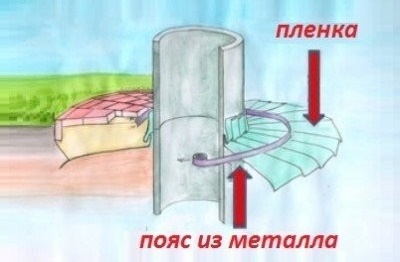


4 comments